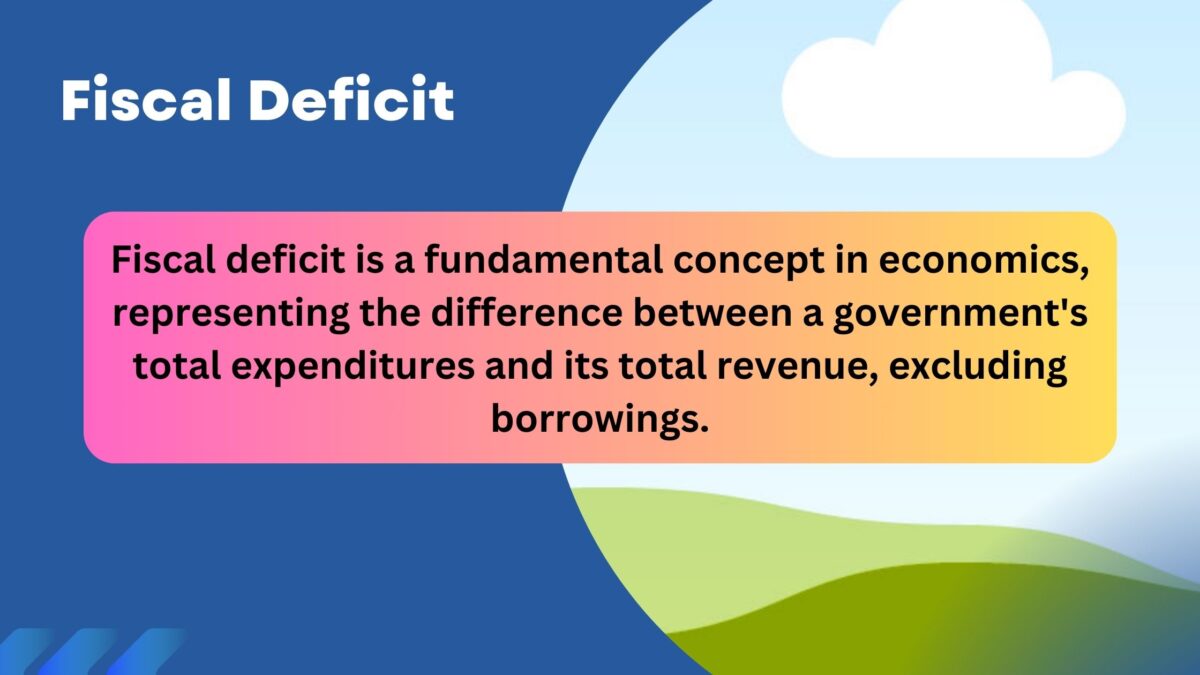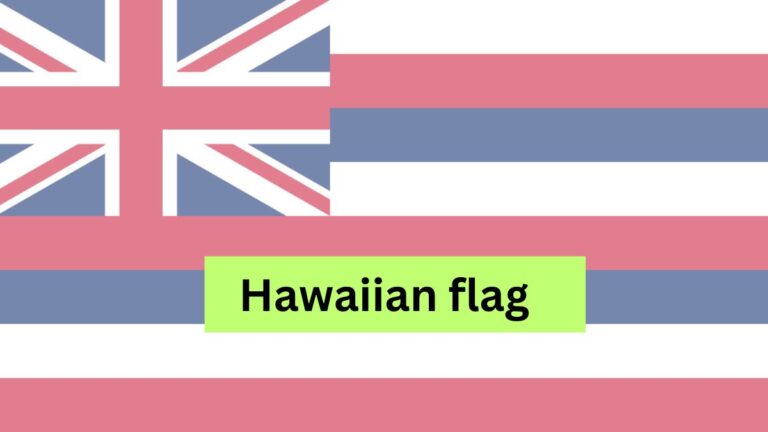Fiscal Deficit- Definition, Calculation and Significance

Fiscal deficit is a fundamental concept in economics, representing the difference between a government’s total expenditures and its total revenue, excluding borrowings. It serves as a crucial indicator of a government’s financial health and its ability to meet its spending obligations without resorting to excessive borrowing. Understanding fiscal deficit requires exploring its definition, significance, measurement, causes, effects, and management strategies.
Definition of Fiscal Deficit
Fiscal deficit reflects the extent to which a government’s spending exceeds its revenue in a given period. It is typically expressed as a percentage of Gross Domestic Product (GDP), providing a relative measure of the government’s financial position compared to the size of the economy. A fiscal deficit occurs when a government’s expenditures, including both current expenses and capital investments, surpass its revenue from taxes, fees, and other sources, excluding borrowing.
Significance of Fiscal Deficit
The significance of fiscal deficit lies in its implications for economic stability, growth, and public welfare:
- Economic Stimulus: Governments may deliberately run deficits to stimulate economic activity during periods of recession or stagnation. By increasing spending or cutting taxes, deficits can boost aggregate demand, leading to higher consumption, investment, and employment.
- Investment in Infrastructure: Deficits are often incurred to finance essential infrastructure projects such as roads, bridges, schools, and hospitals. These investments can enhance productivity, competitiveness, and long-term economic growth.
- Social Welfare Programs: Deficits enable governments to fund social welfare programs aimed at alleviating poverty, providing healthcare, education, and housing, and promoting social inclusion. These programs contribute to social stability, equity, and human development.
- Political Considerations: Fiscal policy, including deficits, is influenced by political factors such as electoral cycles, public opinion, and policy preferences of elected officials. Governments may prioritize short-term political gains or respond to immediate challenges, leading to fluctuations in deficits over time.
Measurement of Fiscal Deficit
Fiscal deficit is measured using the following formula:
Fiscal Deficit= Total Expenditures−Total Revenue excluding Borrowings
It provides a comprehensive assessment of a government’s budgetary position by considering both revenue and expenditure components. The fiscal deficit is often expressed as a percentage of GDP to facilitate comparison across countries and over time.
Causes of Fiscal Deficit
Several factors contribute to the emergence of fiscal deficits:
- Economic Downturns: During periods of economic recession or slowdown, tax revenues tend to decline due to reduced economic activity, while government spending on unemployment benefits and other social programs may increase. This imbalance between revenue and expenditure can lead to higher fiscal deficits.
- Wars and Conflicts: Military expenditures associated with wars, conflicts, or defense buildup can strain government finances and result in fiscal deficits. The costs of maintaining armed forces, procuring weapons, and financing war-related activities often require increased borrowing.
- Political Choices: Governments may choose to run deficits to implement policy priorities, fulfil electoral promises, or respond to social demands. Political considerations, such as the desire to maintain popularity or support specific interest groups, can influence fiscal policy decisions.
- Tax Policies: Changes in tax rates, exemptions, or enforcement can affect government revenue and, consequently, fiscal deficits. Tax cuts aimed at stimulating investment and consumption may reduce revenue, leading to higher deficits unless accompanied by corresponding spending cuts.
- Demographic Trends: Aging populations and rising healthcare costs pose fiscal challenges for governments, particularly in providing pensions and healthcare services. Increased spending on retirement benefits and healthcare can contribute to higher fiscal deficits over time.
- Natural Disasters: The aftermath of natural disasters such as earthquakes, hurricanes, or floods often requires substantial government spending on relief and reconstruction efforts. These emergency expenditures can strain government budgets and lead to temporary increases in fiscal deficits.
Effects of Fiscal Deficit
Fiscal deficits have various economic, social, and political effects:
- Interest Payments: Governments must service the debt incurred to finance deficits by paying interest to creditors. Higher interest payments divert resources away from productive investments, public services, or social programs, limiting the government’s fiscal flexibility.
- Inflation: Excessive deficits financed by money creation or borrowing from the central bank can lead to inflationary pressures. When government spending outpaces the economy’s productive capacity, it can fuel demand-pull inflation, eroding purchasing power and reducing real incomes.
- Crowding Out: Large fiscal deficits can crowd out private investment by absorbing financial resources and raising interest rates. When governments compete with the private sector for funds in the financial markets, they may drive up borrowing costs, making it more expensive for businesses to invest and expand.
- Sovereign Debt Crisis: Prolonged and unsustainable deficits can undermine investor confidence in a government’s ability to repay its debt obligations. In extreme cases, this loss of confidence can trigger a sovereign debt crisis, characterized by a sharp increase in borrowing costs, capital flight, and financial instability.
- Exchange Rate Volatility: Fiscal deficits can contribute to exchange rate fluctuations, especially in open economies with flexible exchange rate regimes. Large deficits may lead to currency depreciation as investors reassess the country’s fiscal sustainability and risk profile, affecting trade competitiveness and import prices.
Management of Fiscal Deficit
Governments employ various strategies to manage fiscal deficits and ensure fiscal sustainability:
- Revenue Enhancement: Governments can increase tax revenue by raising tax rates, broadening the tax base, or improving tax compliance. Effective tax policies can help generate additional revenue without unduly burdening taxpayers or discouraging economic activity.
- Expenditure Rationalization: Rationalizing government spending involves prioritizing essential programs, reducing wasteful expenditures, and improving the efficiency of public services. By reallocating resources to high-impact areas and eliminating inefficiencies, governments can contain fiscal deficits without compromising service delivery.
- Debt Management: Governments must prudently manage their debt portfolio to minimize borrowing costs and mitigate refinancing risks. This involves issuing debt securities with favourable terms, diversifying funding sources, and implementing sound debt management practices to maintain market confidence.
- Public Sector Reform: Structural reforms in the public sector aim to improve governance, enhance transparency, and increase accountability in the management of public resources. By reforming state-owned enterprises, improving procurement processes, and strengthening financial management systems, governments can reduce fiscal leakages and improve fiscal outcomes.
- Fiscal Rules and Discipline: Fiscal rules, such as deficit targets, debt limits, or balanced budget requirements, can provide a framework for fiscal discipline and accountability. By enshrining fiscal sustainability principles in law or institutional arrangements, governments can enhance credibility and ensure adherence to sound fiscal policies.
- Structural Reforms: Addressing underlying structural imbalances in the economy is essential for achieving long-term fiscal sustainability. Structural reforms aimed at improving labor market flexibility, promoting competition, and enhancing productivity can boost economic growth, increase revenue, and reduce the need for deficit financing.
Case Studies
1. United States
The United States has experienced significant fiscal deficits, particularly during periods of economic recession, war, or financial crisis. Policy responses such as fiscal stimulus packages, tax cuts, and increased government spending have contributed to growing deficits and public debt levels. Debates over fiscal policy focus on balancing short-term stabilization objectives with long-term fiscal sustainability concerns.
2. European Union
Several European Union countries, notably Greece, Spain, and Italy, have faced sovereign debt crises due to unsustainable fiscal deficits and rising public debt levels. These crises have exposed weaknesses in fiscal governance, economic imbalances, and financial vulnerabilities within the Eurozone. Efforts to address fiscal challenges have involved fiscal consolidation measures, structural reforms, and enhanced economic governance at the European level.
3. Japan
Japan has grappled with persistent fiscal deficits and high public debt levels for decades, reflecting a combination of demographic, economic, and policy factors. An aging population, low economic growth, and deflationary pressures have strained government finances, necessitating large-scale deficit spending to support economic activity and social programs. Despite concerns about fiscal sustainability, Japan has maintained relatively low borrowing costs and stable debt dynamics, supported by domestic savings, monetary policies, and investor confidence.
Conclusion
Fiscal deficit is a multifaceted economic phenomenon with significant implications for government finances, economic stability, and public welfare. While deficits can serve as a valuable policy tool for stimulating economic growth, investing in public infrastructure, and addressing social needs, they must be managed prudently to avoid adverse consequences such as inflation, crowding out, or debt crises.
By implementing sound fiscal policies, enhancing fiscal governance, and pursuing structural reforms, governments can achieve fiscal sustainability while promoting inclusive and sustainable economic development.
Also Read:






